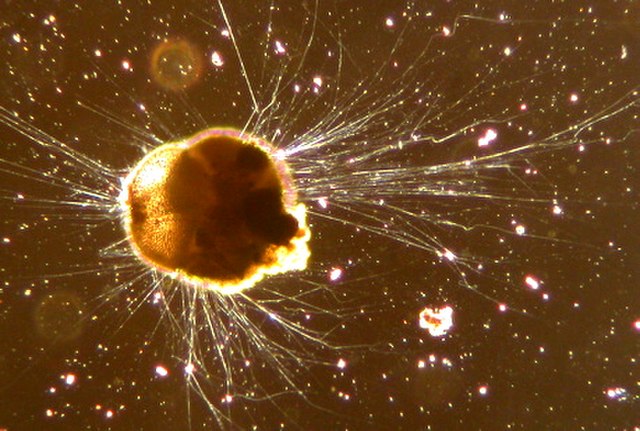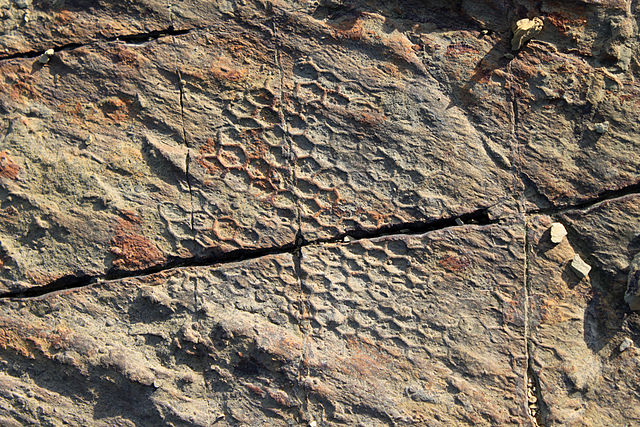Reticulomyxa is a monospecific genus of freshwater foraminiferans. The type species is the unicellular Reticulomyxa filosa. It is found in freshwater environments as well as moist environments, like decomposing matter and damp soils. The heterotrophic naked foraminiferan can feed on microbes as well has larger organisms and is able to be sustained in culture by supplemented nutrients such as wheat germ and oats. The large, multinucleate foraminferan is characteristic for its lack of test and named for the network of connecting pseudopodia surrounding its central body mass. The organism has unique bidirectional cytoplasmic streaming throughout the anastomosing pseudopodia that is some of the fastest reported organelle transport observed. Reticulomyxa was first described in 1949 and is commonly used as a model organism for the unique transport of organelles throughout the cytoplasm of pseudopodia by cytoskeletal mechanisms. Only asexual reproduction of this genus has been observed in culture, but the genome possesses genes related to meiosis suggesting it is capable of sexually reproductive life stages.

Reticulomyxa
Small section of the Reticulopodial Network of Reticulomyxa filosa: Fine reticulopods alter with small Lamellipodial sections. (Phase contrast micrograph; bar = 50 micrometers)
Foraminifera are single-celled organisms, members of a phylum or class of Rhizarian protists characterized by streaming granular ectoplasm for catching food and other uses; and commonly an external shell of diverse forms and materials. Tests of chitin are believed to be the most primitive type. Most foraminifera are marine, the majority of which live on or within the seafloor sediment, while a smaller number float in the water column at various depths, which belong to the suborder Globigerinina. Fewer are known from freshwater or brackish conditions, and some very few (nonaquatic) soil species have been identified through molecular analysis of small subunit ribosomal DNA.
Foraminifera
Fossil nummulitid foraminiferans showing microspheric (larger) and megalospheric individuals (smaller); Eocene of the United Arab Emirates; scale in mm
Foraminiferan tests (ventral view)
The mysterious Paleodictyon has been interpreted as a fossil xenophyophore but this remains controversial.






